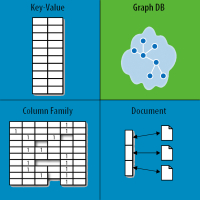-
01: Introduction
-
Introduction to databases
-
Select statements
- 01: Introduction
-
-
02: Conceptual Database Design
-
Conceptual database design
-
Aggregate queries
- 02: Conceptual Design
-
-
03: Logical Database Design
-
Logical database design
-
Join queries
- 03: Logical Design
-
-
04: Enhanced ER diagrams
-
Enhanced ER Modelling
-
Multi-table and Outer Joins
- 04: Enhanced ER Diagrams
-
-
05: Normalisation
-
Normalisation
-
Data Manipulation
- 05: Normalisation 1
-
-
06: Advanced Normalisation
-
Normalisation example
-
Normalisation beyond 3NF
-
Data Definition
- 06: Normalisation 2
-
-
07: Physical Database Design
-
Conceptual and Logical recap
-
Physical database design
-
Subqueries and views
- 07: Physical Database Design
-
-
08: Security, Indexes and Triggers
-
Database Security
-
Indexes, Triggers, User and Privileges
- 08: Security, Indexes and Triggers
-
-
9: Database Concurrency
-
Transaction Management
-
MySQL Backup and Recovery
- 09: Database Concurrency
-
-
10: Backup and Recovery
-
Backup and Recovery
-
Installing MongoDB
- 10: Backup and Recovery
-
-
11: NoSQL 1
-
NoSQL Databases
-
MongoDB - Create
-
MongoDB - Read
- 11: NoSQL 1
-
-
12: NoSQL 2
-
Document-oriented modelling
-
MongoDB - Update
-
MongoDB - Delete
- 12: NoSQL 2
-
11: NoSQL 1
NoSQL Databases
NoSQL Databases

This lecture discusses concepts that relate to NoSQL (non-relational) databases.
MongoDB - Create
Create in MongoDB

In this lecture, we examine the operations used to create documents and collections in MongoDB.
Create

This lab introduces the CREATE functions in MongoDB.
MongoDB - Read
Read in MongoDB

This lecture examines the syntax of the find() operation used to read data in MongoDB.
Read (find)

In this lab, we will explore the find() statement in MongoDB, including a range of operators used to filter query results.